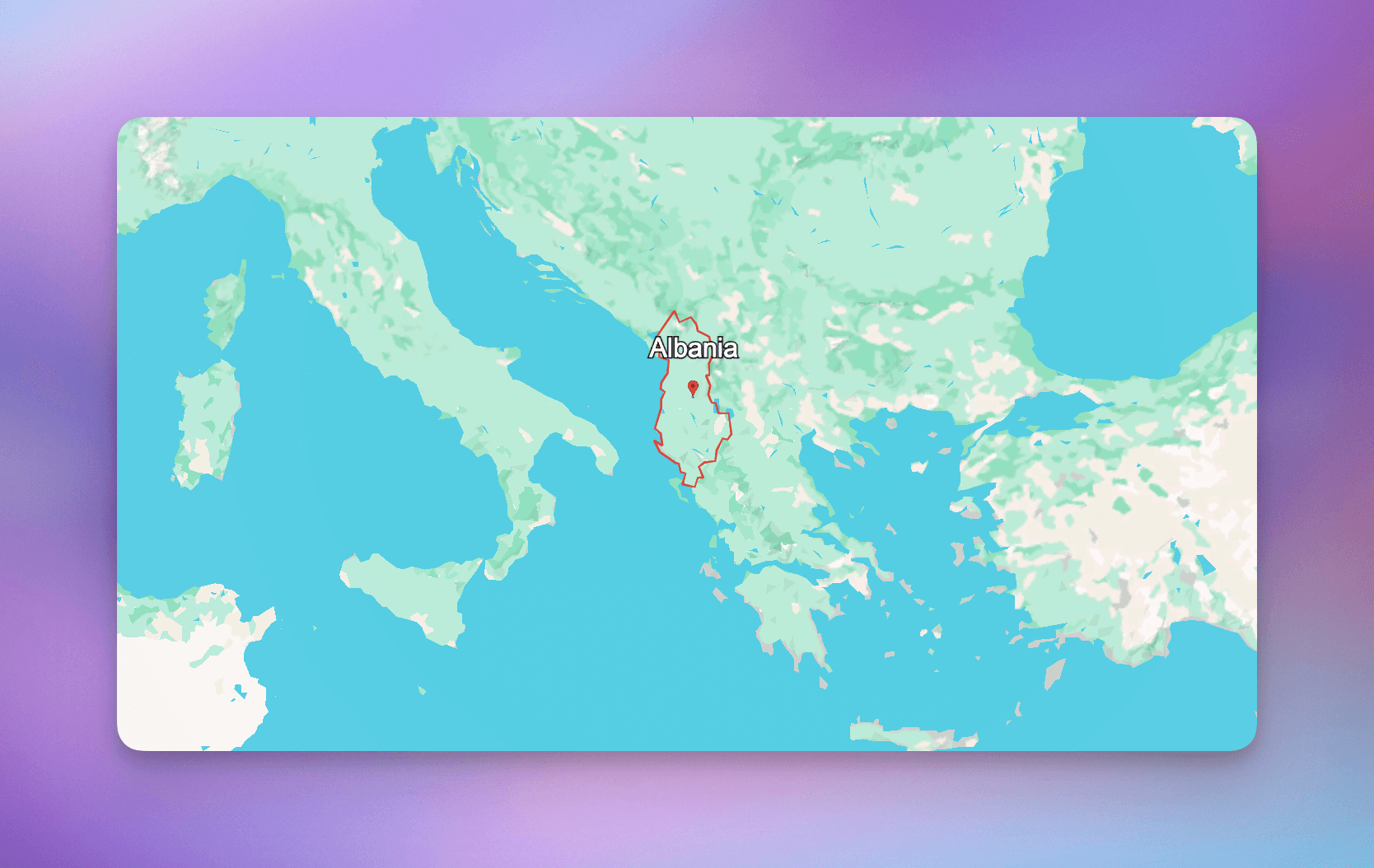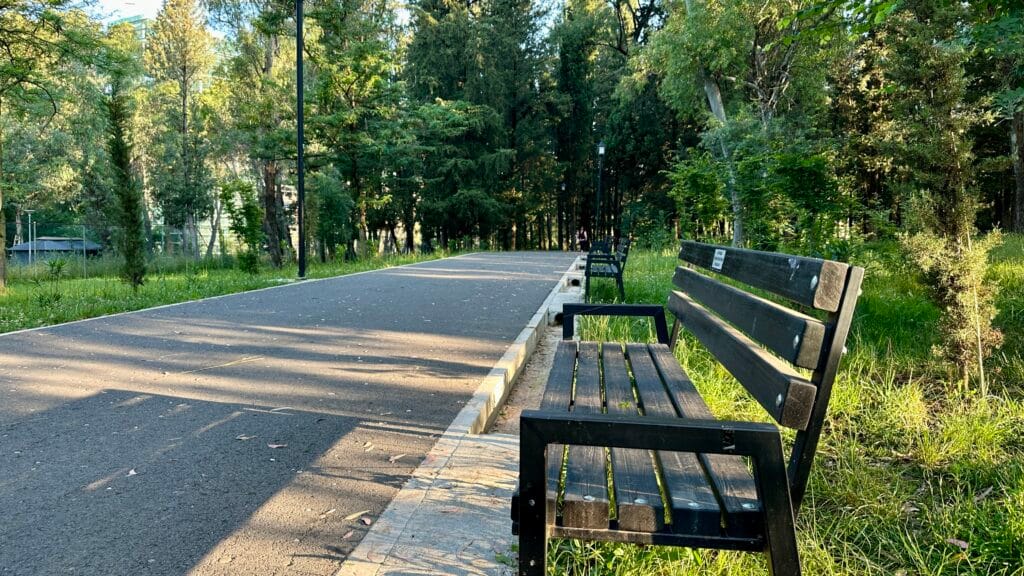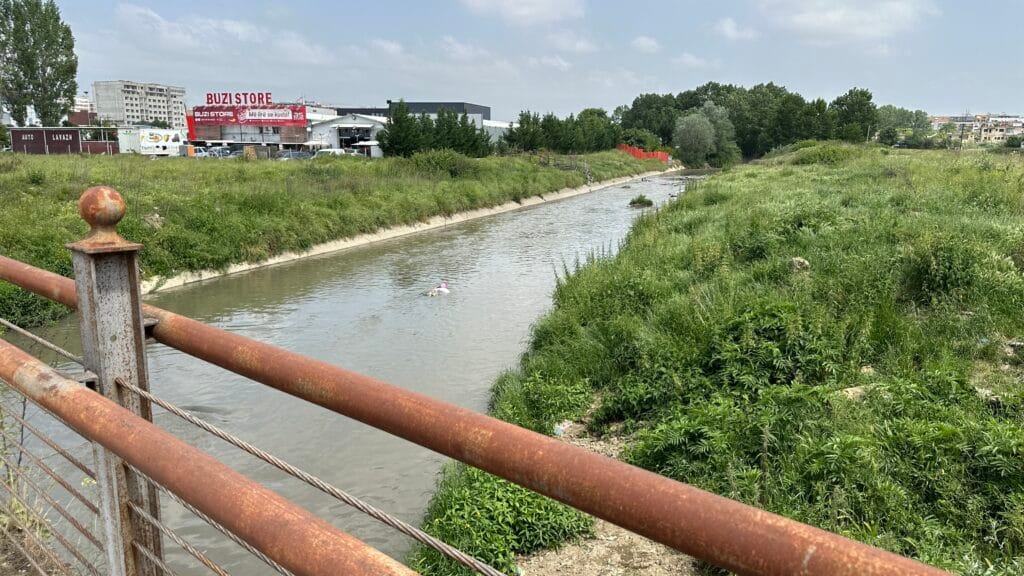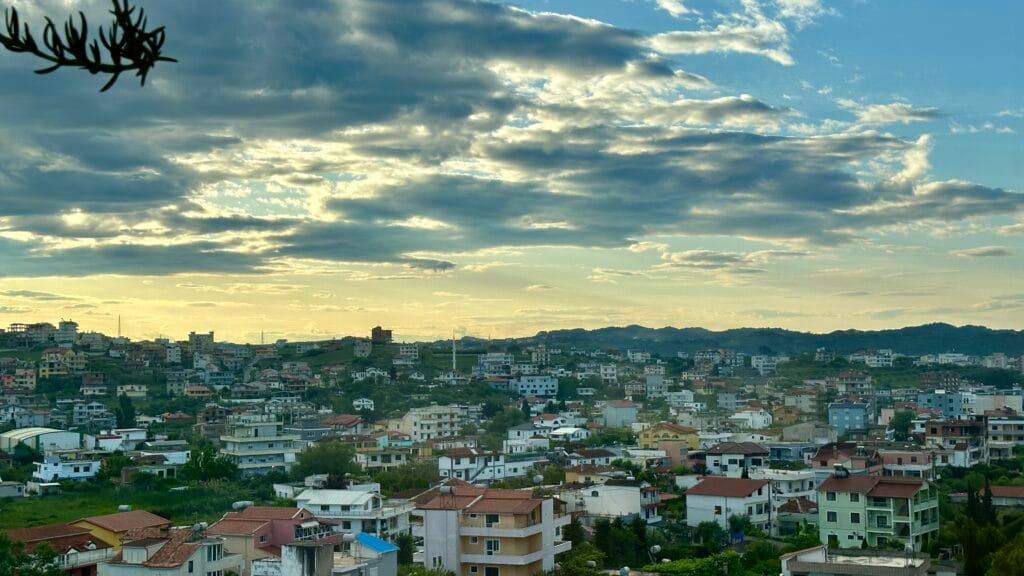Take a Taxi With Patoko Today
Use "WEB" referral code, for a free 50 Toko bonus.

Albania's unique position in the Balkans, blending ancient heritage with modern allure. From pristine coastlines to diverse cultures, explore this crossroads of civilizations.
Use "WEB" referral code, for a free 50 Toko bonus.
You might find the country of Albania fascinating because of its strategic location in Southeastern Europe. Positioned on the Balkan Peninsula, Albania boasts a coastline stretching 476 kilometers along the Adriatic and Ionian Seas. This location has made it a vital crossroads for civilizations throughout history. Ancient Greeks, Romans, Byzantines, and Ottomans have all left their mark here, shaping Albania’s rich cultural identity. Its borders with Montenegro, Kosovo, North Macedonia, and Greece further enhance its diverse traditions. Albania’s unique blend of history, geography, and culture makes it a standout nation in the region.
You can find Albania in the western part of the Balkan Peninsula, a region known for its rich history and diverse cultures. This small yet fascinating country covers an area of 28,748 square kilometers (11,100 square miles). Its borders connect it to Montenegro in the northwest, Kosovo in the northeast, North Macedonia in the east, and Greece in the south and southeast. Albania’s southern border with Greece stretches for 282 kilometers (175 miles), highlighting its close ties with its neighbors. The country’s mountainous terrain makes it one of the most rugged landscapes in Europe, offering breathtaking views and unique ecosystems. Albania’s geographic position places it at the crossroads of Southeastern Europe, making it a vital link between different cultures and civilizations.
Albania’s coastline, which spans approximately 476 kilometers (296 miles), lies along the Adriatic and Ionian Seas. This proximity shapes the country’s economy and culture in many ways. Tourism thrives here, with visitors drawn to the pristine beaches, crystal-clear waters, and diverse ecosystems. Between 2005 and 2012, the number of tourists visiting Albania surged from 500,000 to 4.2 million, showcasing the growing appeal of its coastal regions. Tourism now contributes significantly to the national economy, accounting for 6% of the GDP directly and over 20% when indirect contributions are included.
The seas also support Albania’s fishing industry, though it remains underdeveloped. The Ionian Sea, rich in fish species like carp and sea bream, plays a vital role in local traditions and cuisine. Additionally, the Port of Durrës, the largest passenger port in the Adriatic and Ionian Seas, handles around 1.5 million passengers annually. This port, along with an extensive ferry system, connects Albania to nearby islands and coastal cities, boosting trade and tourism.
Albania’s location in the western part of the Balkan Peninsula gives it strategic importance in the region. Its position along the Adriatic and Ionian Seas makes it a gateway between Europe and the Mediterranean. Historically, this geographic position has attracted various civilizations, from the ancient Greeks to the Ottomans, each leaving a lasting impact on the country’s culture and identity. Today, Albania continues to play a key role in regional trade networks and diplomatic relations. Its location allows it to serve as a bridge between Western Europe and the rest of the Balkans, fostering cooperation and economic growth.

Albania’s coastline offers some of the most stunning natural landscapes in Southeastern Europe. You can explore pristine beaches that attract sun seekers and watersports enthusiasts alike. The Albanian Riviera, stretching along the Ionian Sea, features crystal-clear waters and dramatic cliffs. National parks like Llogara National Park provide a unique blend of coastal and mountainous scenery, offering breathtaking views from the beaches to towering peaks. If you enjoy birdwatching, Karavasta Lagoon National Park is a must-visit. This park, with its unique saltpan landscape, serves as a crucial roosting corridor for migratory birds.
For adventure seekers, the Osumi River Canyon offers dramatic scenery and opportunities for whitewater rafting. You can also visit Karaburun-Sazan Marine Park, which is home to secluded rocky coves and endangered species like loggerhead sea turtles. These coastal landscapes not only attract tourists but also play a vital role in preserving Albania’s rich biodiversity.
Albania’s mountainous terrain creates a haven for biodiversity. The rugged peaks and valleys form distinct ecological zones, enhancing species richness and endemism. You’ll find that the convergence of climatic, geological, and hydrological conditions in these regions contributes to a wide range of habitats. This diversity has earned Albania recognition as one of Europe’s biodiversity hotspots.
The mountains also support a variety of flora and fauna, making them a paradise for nature enthusiasts. You can hike through lush forests, spot rare wildlife, or simply enjoy the tranquility of these untouched landscapes. The ecological significance of Albania’s mountain ranges highlights the country’s commitment to preserving its natural heritage.
Albania’s rivers and lakes are vital to its ecosystem and cultural identity. The country boasts around 250 lakes of various origins, including tectonic, glacial, and fluvial lakes. The Lake of Shkodër, the largest lake in Southern Europe, and Lake Ohrid, one of the world’s oldest lakes, are two of the most notable. These lakes not only support diverse aquatic life but also offer opportunities for fishing and eco-tourism.
Albania is also home to 152 rivers, with the Drin River being the longest. Flowing through a biodiverse catchment area, it connects with lakes like Shkodër and Ohrid. The Vjosa River, often called the last wild river in Europe, remains free-flowing and supports a wide range of habitats. Coastal lagoons such as Karavasta and Narta further enhance the country’s ecological richness. These water bodies contribute to the productivity of coastal waters and sustain local communities.
Albania’s natural features, from its coastal landscapes to its mountain ranges and waterways, make it a unique destination for nature lovers and adventurers. These features not only define the country’s geography but also play a crucial role in its ecological and cultural identity.
You can see the deep cultural ties between Albania and Montenegro in their shared history and traditions. Ethnic Albanians living in Montenegro highlight this connection. Over centuries, both nations experienced influences from ancient civilizations like the Greeks, Romans, Byzantines, and Ottomans. These interactions shaped their cultural landscapes and created a bond that persists today.
The two countries also share a love for traditional music, dance, and cuisine. You might notice similarities in their folk songs and instruments, which reflect their intertwined histories. The border regions, where communities from both nations interact, serve as a living example of this cultural exchange. These ties not only enrich their heritage but also foster mutual respect and understanding.
Albania and Kosovo share a unique relationship rooted in history and identity. During World War II, the Bujan Conference brought leaders together to discuss the possibility of unification, reflecting their aspirations for closer ties. In modern times, Albania became one of the first nations to recognize Kosovo’s independence in 2008, establishing diplomatic relations the very next day. This act solidified their political alliance and demonstrated Albania’s unwavering support for Kosovo.
The phrase “one nation, two states” often describes their bond. You might hear the slogan “Jemi një” (We are one), which captures the shared identity of Albanians in both regions. These connections influence their collaboration in areas like education, culture, and trade. By working together, Albania and Kosovo continue to strengthen their relationship and promote regional stability.
Albania and North Macedonia have built a strong partnership through regional initiatives. Their cooperation focuses on infrastructure, trade, and economic development. For example, the two countries agreed to construct the Arber Road, which will link Albania to North Macedonia and extend to Bulgaria. This project aims to improve connectivity and boost trade across the region.
In Durrës, Albania’s coastal city, the two nations plan to develop an industrial park and enhance port infrastructure. These projects will create opportunities for businesses and strengthen economic ties. By working together on such initiatives, Albania and North Macedonia demonstrate their commitment to regional progress and cooperation.
You can see the deep historical and cultural ties between Albania and Greece in their shared heritage. These two neighboring countries have influenced each other for centuries, creating a unique bond that continues to shape their identities today. Ancient civilizations, such as the Illyrians and Greeks, interacted extensively in this region. Their exchanges left a lasting impact on art, architecture, and traditions.
The southern regions of Albania, particularly areas like Gjirokastër and Sarandë, showcase this shared heritage. You might notice Greek architectural styles in ancient ruins and traditional buildings. The Butrint archaeological site, a UNESCO World Heritage Site, highlights this connection. It features Greek, Roman, and Byzantine influences, reflecting the region’s rich history.
Language also plays a role in linking these two nations. Many Albanians living near the Greek border speak Greek fluently. Similarly, ethnic Greeks in Albania maintain their language and traditions. This bilingualism fosters cultural exchange and strengthens the relationship between the two countries.
Religion forms another important aspect of their shared heritage. Both Albania and Greece have strong ties to Orthodox Christianity. You can visit historic Orthodox churches and monasteries in southern Albania, such as the Monastery of Saint Nicholas in Mesopotam. These sites reflect the spiritual and cultural connections between the two nations.
Cuisine further illustrates the bond between Albania and Greece. You might find similarities in dishes like souvlaki, tzatziki, and baklava. These shared culinary traditions highlight the blending of flavors and techniques over centuries of interaction. Festivals and celebrations in border regions often feature music, dance, and food that reflect both cultures.
Despite their differences, Albania and Greece continue to collaborate in areas like trade, tourism, and education. Cross-border projects and initiatives promote mutual understanding and economic growth. By exploring these connections, you can appreciate how Albania’s shared heritage with Greece enriches its cultural identity and strengthens its ties with its southern neighbor.

Albania has been a meeting point for ancient civilizations for thousands of years. Archaeological discoveries reveal that people have lived here since the Neolithic era. Excavations at sites like the Cave of Pellumbas and Maliq show evidence of early settlements. During the Bronze Age, tumuli tombs, such as those in Pazhok, highlight the transition to the Illyrian Iron Age. These findings connect modern Albanians to their ancient ancestors.
| Evidence Type | Description |
|---|---|
| Neolithic Settlements | Excavations at the Cave of Pellumbas and Maliq show sustained inhabitation since the Neolithic era. |
| Tumuli Tombs | Sites like Pazhok reveal parallels between Bronze Age and Illyrian Iron Age constructions. |
| Genetic Studies | Analyses indicate modern Albanians share ancestry with ancient Balkan inhabitants, including Illyrians. |
The Albanian language, a descendant of the Illyrian languages, reflects this deep history. Linguistic studies suggest that it diverged from Proto-Illyrian over 3,000 years ago. Despite external influences, the language has retained most of its native vocabulary. Genetic studies also confirm that modern Albanians share a direct lineage with ancient Balkan populations, preserving their identity through centuries of change.
The Ottoman Empire ruled Albania for over four centuries, leaving a lasting impact on its culture and identity. During this period, many Albanians converted to Islam, making it the dominant religion. This shift created a unique religious landscape where Muslims, Orthodox Christians, and Catholics coexisted. The Bektashi sect, which emerged during Ottoman rule, introduced distinct rituals and traditions. It also promoted gender inclusivity in religious practices, which remains a notable feature of Albanian culture.
In the highlands, the Code of Lekë Dukagjini blended Ottoman governance with local customs. This tribal law system influenced social structures and continues to shape cultural practices today. You can see the Ottoman legacy in Albania’s architecture, cuisine, and festivals, which combine Eastern and Western elements.
Albania’s history as a crossroads of civilizations has created a rich tapestry of religious and cultural diversity. Christianity has ancient roots here, with early communities forming during the Apostolic era. The first bishopric was established in Shkodër in 387. Judaism also has a long history in Albania. The first synagogue was built in Sarandë in the fifth century. Remarkably, Albania became a safe haven for Jews during the Holocaust, with its Jewish population growing during this time.
Islam arrived in the ninth century and became the majority religion under Ottoman rule. Despite this, Albania maintained a significant Christian minority. Today, you can find mosques, Orthodox churches, and Catholic cathedrals coexisting peacefully. This harmony reflects Albania’s tradition of religious tolerance, which has become a defining feature of its identity.
You can explore this diversity in Albania’s cultural landmarks. The Butrint archaeological site showcases Greek, Roman, and Byzantine influences. Historic mosques and churches, such as the Et’hem Bey Mosque in Tirana and the Ardenica Monastery, highlight the country’s multi-religious heritage. Festivals and traditions further celebrate this blend of cultures, making Albania a unique destination for understanding coexistence.
Tourism plays a vital role in Albania’s economy. The country has seen remarkable growth in this sector, making it a priority for economic development. You can observe this progress through several key milestones:
This growth reflects Albania’s commitment to enhancing its tourism sector. A strategic development plan has been implemented to improve infrastructure, promote cultural heritage, and attract international visitors. The pristine beaches, historical landmarks, and natural beauty of Albania continue to draw travelers from around the world. Tourism not only boosts the economy but also creates jobs and supports local businesses.
Tip: If you visit Albania, explore its UNESCO World Heritage Sites like Butrint and Gjirokastër, which showcase the country’s rich history and culture.

Albania’s location in the Balkans makes it a key player in regional trade. To support this role, the country has invested heavily in infrastructure. Recent projects aim to improve transportation and connectivity, which are essential for economic growth. Some notable developments include:
These projects demonstrate Albania’s commitment to modernizing its infrastructure. Improved roads, railways, and ports make it easier for businesses to transport goods and for tourists to explore the country. Tirana International Airport, the 7th busiest in the Balkans, handled over 5.2 million passengers in 2022, highlighting the importance of transportation infrastructure in driving economic growth.
Albania plays a vital role in the political and diplomatic landscape of the Balkans. You can see this through its active participation in regional initiatives. At the Crete Summit, Albania worked alongside Greece to promote cooperation among Balkan nations. This summit introduced the idea of a “Balkan Schengen,” which aims to simplify the movement of people and goods across borders. Albania’s efforts in this initiative highlight its commitment to fostering unity in the region.
Since 1992, Albania has pursued NATO integration, becoming the first Eastern European country to apply for membership. This step demonstrated its dedication to strengthening security and collaboration in the Balkans. Albania’s military cooperation exercises with other nations further reinforce its diplomatic presence. These actions show how Albania has positioned itself as a key player in regional politics.
Albania has made significant contributions to maintaining stability in the Balkans. Its foreign policy reflects a shift toward realism and flexibility, especially regarding sensitive issues like Kosovo. You might notice how Albania has actively engaged in initiatives that improve relationships among Balkan countries. For example, Albania has worked to enhance its ties with Serbia, a crucial step for fostering peace in the region.
These actions demonstrate Albania’s dedication to ensuring peace and collaboration in the region.
Albania’s rich cultural heritage has left a lasting impact on the Balkans. You can trace its cultural roots to ancient civilizations like the Greeks, Romans, Byzantines, and Ottomans. Albanian music, for instance, reflects influences from these empires. Folk music, with distinct styles from the northern Ghegs and southern Tosks, has inspired neighboring regions such as Kosovo, Greece, and Turkey.
You can also explore Albania’s historical monuments, such as the Illyrian Tombs and the Fortress of Bashtovë, which showcase its architectural legacy. These cultural elements highlight Albania’s influence across the Balkans and its role in preserving the region’s shared heritage.
The country of Albania stands out as a unique and significant nation in Southeastern Europe. Its location on the Balkan Peninsula, bordered by the Adriatic and Ionian Seas, has shaped its rich cultural and historical identity. You can see this in its role as a crossroads of civilizations, where ancient influences blend with modern traditions.
Today, Albania thrives as a tourist destination, attracting nearly 10 million visitors in 2023 compared to just 500,000 in 2005. Its stunning coastlines and cultural heritage continue to captivate travelers. The country also plays a key role in regional trade, supported by agreements like the Stabilization and Association Agreement with EU members and the Central European Free Trade Agreement. These partnerships strengthen its economy and foster collaboration with neighboring nations.
Albania’s strategic location ensures its importance in politics, trade, and tourism. Its vibrant heritage and growing influence make it a vital player in the Balkans, contributing to the region’s stability and prosperity.
Albania lies in Southeastern Europe on the Balkan Peninsula. It borders Montenegro, Kosovo, North Macedonia, and Greece. Its coastline stretches along the Adriatic and Ionian Seas, making it a strategic location between Europe and the Mediterranean.
Albania features diverse landscapes, including rugged mountains, pristine beaches, and rich biodiversity. The country also boasts unique rivers like the Vjosa, Europe’s last wild river, and lakes such as Lake Ohrid, one of the oldest in the world.
Albania has hosted ancient Greeks, Romans, Byzantines, and Ottomans. These civilizations left lasting influences on its culture, language, and architecture. You can see this heritage in archaeological sites like Butrint and the Ottoman-era buildings in Berat.
Albanian is the official language. It has two main dialects: Gheg in the north and Tosk in the south. In border regions, you might also hear Greek, Macedonian, or Italian due to historical and cultural ties.
Albania is known for its religious tolerance. Islam is the majority religion, followed by Orthodox Christianity and Catholicism. You can visit mosques, Orthodox churches, and Catholic cathedrals, which coexist peacefully across the country.
You should explore the Albanian Riviera, the UNESCO-listed cities of Berat and Gjirokastër, and the Butrint archaeological site. Nature lovers can visit Llogara National Park or the Osumi River Canyon for breathtaking views and outdoor adventures.
Albania plays a key role in promoting regional stability and cooperation. It actively participates in trade networks, infrastructure projects, and diplomatic initiatives like the “Balkan Schengen” to strengthen ties with neighboring countries.
Yes, Albania is considered safe for tourists. The locals are known for their hospitality, and crime rates are relatively low. However, you should always follow general travel safety guidelines to ensure a pleasant trip.
Tip: If you plan to visit Albania, learn a few basic Albanian phrases. Locals appreciate the effort and it enhances your travel experience!